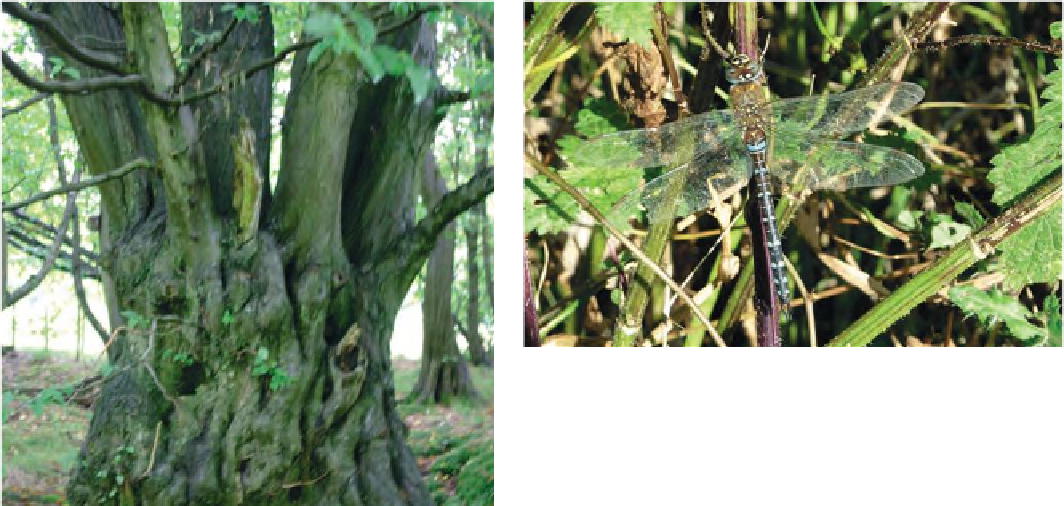Agriculture Reference
In-Depth Information
Figure 3.18
Dragonfl y nymphs live underwater then climb
up the waterside plants to hatch into adults.
Z
The breeding success of such populations is
reduced because there are few individuals and
less mixing of genes, so genetic problems
such as increased susceptibility to disease
or reduced fertility can occur. A collection of
suburban gardens can therefore be seen as one
large habitat because they are interconnected
and they often form wildlife corridors linking
larger green areas such as parks or fi elds to
each other.
Z
Third, the hedge itself creates shelter in the
garden and protects soils from erosion and
moisture loss enabling a wider range of plants
to be grown, along with the organisms they
support, and a more biodiverse soil community.
Although a single species hedge will be
better than a fence or wall, a mixed hedge
will provide a wider range of food plants and
structure.
If hedges are not an option, a sunny wall or
fence will support a range of invertebrates and
if climbers are grown up them then the habitat
is enriched.
X
Meadows
.
While lawns
are an attractive feature
in gardens they incorporate only a few plant
species, supporting a limited range of organisms.
They produce no fl owers and are poor cover for
invertebrates. Studies show that even a small
area of long grass is benefi cial for invertebrates
for shelter. Incorporation of fl owers among the
grasses to imitate a meadow will improve the
wildlife value through supplying nectar and pollen
for insects and seeds for birds. It is important to
reduce competition from vigorous grasses and
the key to this is reducing soil fertility (see p. 140).
Unfertilized, light sandy soils are therefore more
suitable than heavy clay soils.
Figure 3.17
An ancient tree trunk providing a wealth
of microhabitats for many organisms
covering the same total area and this also
means that the loss of any one pond through
development has less impact overall. The area
between the highest water level and the lowest
(the
draw-down
zone
) is the most biodiverse,
so sloping pond edges in ponds which are not
frequently topped up are the best arrangement. A
good range of marginal plants will provide cover
for organisms to hide, feed and breed at the
water's edge (Figure 3.18).
X
Boundaries
.
As with borders, a hedge
is basically
a woodland edge in miniature and provides a good
range of habitats for organisms. Hedges can be
important for wildlife in three ways:
Z
First, they provide a food source, shelter,
breeding and territorial sites for a whole range
of organisms from invertebrates to birds and
mammals.
Z
Second, hedges act as
wildlife corridors
connecting habitats together and enabling
organisms such as hedgehogs and other small
mammals to travel further in search of food,
shelter or breeding sites and also provide a
route for prey to fl ee from predators. They are
commuting highways for bats, butterfl ies and
small mammals between feeding and roosting
sites. Where habitats become fragmented
(e.g. due to removal of hedgerows or urban
development), the populations in them become
threatened as they are unable to escape
predators (Figure 3.19).

